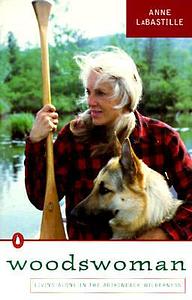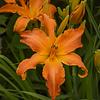You need to sign in or sign up before continuing.
Take a photo of a barcode or cover
This was a pretty interesting read! Not a ton of backstory before you’re dumped into Anne’s life, but her existence in the Adirondacks is fascinating. It’s amazing how much she accomplished and how she became so independent in the relative wilderness. Some parts were a bit duller than others, but overall it was an engaging read. It’s interesting to see what holds up and what doesn’t—like her boss who was 17 years older than her taking a romantic interest in her should have been a red flag
adventurous
emotional
hopeful
informative
inspiring
slow-paced
3.5 stars really. GREAT first half of the book — lovely illustrative nature writing. Once she got into talking more about people, it got a lot less compelling for me.
adventurous
emotional
inspiring
medium-paced
Maybe I just wasn't in the mood for this "story"... but more likely the author is just not much of a storyteller and bored me to tears. If she didn't have a pet fox and then a dog I wouldn't have finished the book. Unbelievably boring and humorless book.
adventurous
inspiring
medium-paced
They didn't have the "real" book so this audio will have to suffice. I loved this book!
Anne LaBastille was a pretty amazing woman. In a time where most women wouldn't think of being on their own, she went out and built her own cabin in the Adirondacks and lived there alone. And this book is the telling of her first couple years out there, and a little bit of her history before that.
With a divorce from her husband in her future, Anne needed to set out and find her own path. After loving hiking, camping, and the outdoors, she decides to buy some land in the Adirondack wilderness and build a small cabin out there. Without electricity and running water, or even an indoor toilet, it's very rustic, but it's where she finds home. Spending her time writing, or with her dog, she finds peace out in the woods, and when she craves company she can always go into town. She even goes over a couple harrowing experiences she has out by herself. But the best thing about being there, is that she gains even more appreciate for the wilderness and the animals that live there.
Anne is the main character in this book. Well, aside from her dog. So we really only see her through her eyes, and she doesn't spend much time on herself. Hardly any actually, she describes the wilderness around her. She does touch on the few romantic interests she had in her life, but they are all positive, despite the relationships ending. Even the man she divorces is shown in a mostly positive light in the book. And her neighbors, aside from a few, are described positively as well. She does tend to show a distaste for litterers and peace disturbers, but really, who could blame her?
Sometimes this book could drag on a little with the descriptions of the wilderness. Although there were pictures to show a little bit of what it was like, it was hard to see what she was trying to describe sometimes. But in all, I found it a very interesting book. I liked the way she lived her life and how she seemed to be so at peace with her decisions. Hers seemed an ideal life in some ways, although I'm not sure I'd ever be ok without an indoor toilet. But to each their own.
An interesting book. I will definitely look into reading the sequel. I'm sure it will be just as interesting as this one.
Woodswoman
Copyright 1976
278 pages
Review by M. Reynard 2012
More of my reviews can be found at www.ifithaswords.blogspot.com
With a divorce from her husband in her future, Anne needed to set out and find her own path. After loving hiking, camping, and the outdoors, she decides to buy some land in the Adirondack wilderness and build a small cabin out there. Without electricity and running water, or even an indoor toilet, it's very rustic, but it's where she finds home. Spending her time writing, or with her dog, she finds peace out in the woods, and when she craves company she can always go into town. She even goes over a couple harrowing experiences she has out by herself. But the best thing about being there, is that she gains even more appreciate for the wilderness and the animals that live there.
Anne is the main character in this book. Well, aside from her dog. So we really only see her through her eyes, and she doesn't spend much time on herself. Hardly any actually, she describes the wilderness around her. She does touch on the few romantic interests she had in her life, but they are all positive, despite the relationships ending. Even the man she divorces is shown in a mostly positive light in the book. And her neighbors, aside from a few, are described positively as well. She does tend to show a distaste for litterers and peace disturbers, but really, who could blame her?
Sometimes this book could drag on a little with the descriptions of the wilderness. Although there were pictures to show a little bit of what it was like, it was hard to see what she was trying to describe sometimes. But in all, I found it a very interesting book. I liked the way she lived her life and how she seemed to be so at peace with her decisions. Hers seemed an ideal life in some ways, although I'm not sure I'd ever be ok without an indoor toilet. But to each their own.
An interesting book. I will definitely look into reading the sequel. I'm sure it will be just as interesting as this one.
Woodswoman
Copyright 1976
278 pages
Review by M. Reynard 2012
More of my reviews can be found at www.ifithaswords.blogspot.com
As much as we love each other, he couldn't stay and I couldn't go. (260)
As badly as I wanted to return to ‘civilisation’ after two years of living in the boonies (which is to say, in a much more urban area than where LaBastille to move), I suspect that there’ll always be something compelling to me about this sort of story: a woman sloughs off the trappings of conventional life, builds herself a cabin in the wilderness, and sets about living life according to her own rules.
LaBastille is a detailed narrator and a good storyteller, in turns describing the trials and joys of her cabin, her explorations of the natural world around her, and interactions with people near and far: locals who were just as isolated as she was and city people dropping in for a few hours or a few days, and either thriving or proving that this was not the life for them.
As the book goes on, LaBastille describes a life that gets less isolated and, in many ways, more conventional. She makes changes to the cabin, yes, but meanwhile the world continues to turn, and new legislation and technology do not always suit the isolated life she seeks.
Some of the most interesting material to me, though, were the musings on what sort of romance was possible for a woman with LaBastille’s skill set and lifestyle. As she tells it, the things she would need in a partner were too specific to be easily satisfied: someone who (aside from basic compatibility!) was competent in the outdoors and wasn’t thrown by LaBastille also being competent and independent (I’m reminded, a little, of characters/people who love something for its wildness but aren’t satisfied until they’ve tamed and caged it); someone with an educational background to meet LaBastille’s intellect but who was also willing to spend most of the year in the woods. On the one hand this doesn’t sound like much of an ask, altogether, but combined with the difficulty of meeting people when you’ve cut yourself off from the bulk of society…he couldn’t stay and I couldn’t go.
As badly as I wanted to return to ‘civilisation’ after two years of living in the boonies (which is to say, in a much more urban area than where LaBastille to move), I suspect that there’ll always be something compelling to me about this sort of story: a woman sloughs off the trappings of conventional life, builds herself a cabin in the wilderness, and sets about living life according to her own rules.
LaBastille is a detailed narrator and a good storyteller, in turns describing the trials and joys of her cabin, her explorations of the natural world around her, and interactions with people near and far: locals who were just as isolated as she was and city people dropping in for a few hours or a few days, and either thriving or proving that this was not the life for them.
As the book goes on, LaBastille describes a life that gets less isolated and, in many ways, more conventional. She makes changes to the cabin, yes, but meanwhile the world continues to turn, and new legislation and technology do not always suit the isolated life she seeks.
Some of the most interesting material to me, though, were the musings on what sort of romance was possible for a woman with LaBastille’s skill set and lifestyle. As she tells it, the things she would need in a partner were too specific to be easily satisfied: someone who (aside from basic compatibility!) was competent in the outdoors and wasn’t thrown by LaBastille also being competent and independent (I’m reminded, a little, of characters/people who love something for its wildness but aren’t satisfied until they’ve tamed and caged it); someone with an educational background to meet LaBastille’s intellect but who was also willing to spend most of the year in the woods. On the one hand this doesn’t sound like much of an ask, altogether, but combined with the difficulty of meeting people when you’ve cut yourself off from the bulk of society…he couldn’t stay and I couldn’t go.
This book was pleasant and interesting enough. It covers a lot of the nitty gritty of living on ones own in the wilds of the Adirondacks from the classic elementary school question of "how do you go to the bathroom?" to issues of loneliness.
I didn't realize that LaBastille published this book in the 1970s, and it is primarily focusing on her life during the 60's and 70's. As a result a lot more of this book than I would have expected seemed pretty dated and maybe a little cheesy. Still, going out into the woods to build a life for your self is pretty impressive.
I did decide that I am probably not cut out for the life of a mountain "hermit." I think when I finally make my great escape from the modern urban landscape I'll opt for a nice country cottage with a vegetable patch instead of a cabin in the mountains.
I didn't realize that LaBastille published this book in the 1970s, and it is primarily focusing on her life during the 60's and 70's. As a result a lot more of this book than I would have expected seemed pretty dated and maybe a little cheesy. Still, going out into the woods to build a life for your self is pretty impressive.
I did decide that I am probably not cut out for the life of a mountain "hermit." I think when I finally make my great escape from the modern urban landscape I'll opt for a nice country cottage with a vegetable patch instead of a cabin in the mountains.






